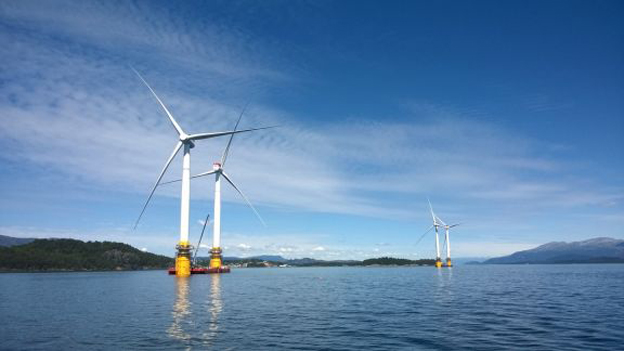
A new study on the future of offshore wind has illustrated the scale of potential of the UK seas for future deployment and is helping to understand and address how we best manage the various demands on our marine environment.
The Future Offshore Wind Scenarios (FOWS) project is intended to support the future development of offshore wind by illustrating the complex factors that must be balanced within the marine environment including consideration of the cost of energy. It provides a more holistic consideration of the complex interactions concerning offshore wind deployment out to net zero than was previously available and will help to inform future decision making.
The study - commissioned by the Department for Business, Energy and Industrial Strategy (BEIS), The Crown Estate and Crown Estate Scotland, and carried out by Arup with support from ORE Catapult and ABPmer - provides the first illustrative framework for how the UK could deploy sufficient offshore wind to meet net zero.
FOWS is not a marine spatial plan, rather, it provides illustrative spatial scenarios for offshore wind development out to 2050. These investigate the potential implications for future relative deployment costs and offshore wind technology choice, in interaction with the environment, other infrastructure, and marine industries such as shipping and fishing.
The findings highlight the importance of approach in considering the spatial and cost implications of deploying sufficient offshore wind to meet net zero. They also identify the important role that floating wind could play, increasing deployment location options, with the potential to ease spatial pressures in UK waters. The study is a significant addition to the evidence base informing the future outlook for the offshore wind sector. It highlights the complexity of demands on the marine space and the holistic thinking that will be required by the many stakeholders that have a role or interest in securing the UK’s clean energy future and increasing the country’s energy independence by accelerating the roll out of low-cost renewables.
FOWS is part of The Crown Estate’s Offshore Wind Evidence and Change Programme, which gathers and harnesses data and evidence to drive forward the sustainable and coordinated expansion of offshore wind whilst supporting clean, healthy, productive and biologically diverse seas.
The insights gained from FOWS will inform decisions about the UK’s offshore energy future including the UK Government’s Marine Spatial Prioritisation Programme which is gathering further data and building evidence, using this study as an important reference point. The UK Government recently announced as part of its British Energy Security Strategy a new ambition on offshore wind of up to 50GW by 2030 – more than enough to power every home in the UK – of which it would like to see up to 5GW from floating offshore wind in deeper seas. This will be underpinned by new planning reforms to cut the approval times for new offshore wind farms from up to 4 years to 1 year and an overall streamlining which will radically reduce the time it takes for new projects to reach construction stages while improving the environment. The ScotWind Leasing process, managed by Crown Estate Scotland on behalf of the Scottish Government, was not complete when the FOWS study was undertaken and is therefore not included in this report. ScotWind Leasing involves 17 projects, totalling almost 25GW in capacity, along with any further projects that will be awarded as part of clearing.
Energy Minister Greg Hands said:
"We are already a world leader in offshore wind. This report will help inform the UK's future deployment of renewable energy, reducing our exposure to volatile global gas prices and boosting our energy security."
Will Apps, Head of Development – Marine, The Crown Estate said:
“Offshore wind is set to play a pivotal role in the UK's 2050 energy system and net zero transition - but delivering on that potential will require balanced and holistic consideration of other marine activities and the natural environment. This study, supported through our Offshore Wind Evidence and Change Programme, for the first time places the nation’s net zero offshore wind ambitions into a spatial context, providing an excellent evidence base for policymakers, the industry and broader stakeholders to use as they work together to deliver this potential, vital for UK energy security and the green economy.”
Colin MacIver, Head of Offshore Wind Development for Crown Estate Scotland, said:
“The opportunities for the UK’s offshore wind sector to help deliver on net-zero are clear. Our recent experience with the ScotWind Leasing round – which could provide enough green electricity to supply every home in Scotland - has demonstrated the appetite of developers to invest in clean energy. It will be important that we continue to work together in order to realise the tremendous potential and provide a just transition for all.”
Clare Lavelle, Scotland Energy Leader, Arup said:
“The UK has ambitious plans for the offshore wind industry as we strive to reach net zero. For us to make the most of this technology and increase capacity to the levels we need, careful consideration is needed to understand the cost and interactions of different deployment options. Our modelling is an important step in understanding and quantifying these interactions and offers a tool to be able to test different scenarios to support future stakeholder engagement.”
The Future Offshore Wind Scenarios report can be viewed here.
 KEYFACT Energy
KEYFACT Energy